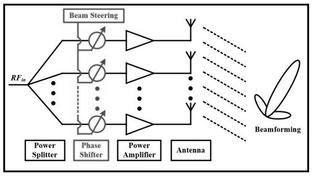RF vs. Baseband: Key Differences Explained
Advertisement
The comparison between RF (Radio Frequency) and Baseband is fundamental to understanding modern communication technology.
RF refers to the high-frequency signals used for wireless transmission, whereas Baseband deals with the original, lower-frequency signal before it’s modulated for transmission. This guide explores the distinctions between RF and Baseband, focusing on their functions, processing methods, and applications in contemporary systems.
RF (Radio Frequency)
-
Definition: Radio frequencies are those higher frequencies typically ranging from 3 kHz to 300 GHz, as illustrated in Figure 1.
-
The RF spectrum is divided into different bands, from ELF (Extremely Low Frequency) to EHF (Extremely High Frequency).
-
Modulation: RF signals undergo modulation before transmission to efficiently transmit information.
-
Filtering: Band-pass filters (BPF) are employed to isolate the desired RF signal, which is subsequently downconverted to a baseband signal to recover the original information.
-
RF to Baseband Conversion: This conversion is achieved using heterodyne or homodyne architectures that rely on RF mixers.
-
Transmission Channels: Various types of transmission lines and coaxial cables serve as RF channels for transmitting RF signals.
-
Applications:
-
RF is utilized for transmitting voice and data wirelessly after converting them to suitable RF frequencies, in accordance with various wireless technologies like WLAN, WiMAX, GSM, CDMA, LTE, Zigbee, Z-wave, LoRa, etc. Each technology operates within specific frequency bands based on link budget requirements.
-
RF plays a crucial role in numerous medical applications such as RF ablation, skin tightening, spectroscopy, telemetry, and Wireless Body Area Networks (WBANs).
-
RF is implemented in home automation systems, automatic car parking facilities, and automated meter reading systems.
-
Radio frequencies are preferred for over-the-air transmission because they can withstand channel impairments that would severely impact baseband signals.
-

Baseband Frequency (Near Zero Frequency)
-
Definition: A baseband signal is characterized by a non-zero magnitude near zero frequency, with a negligible magnitude at other frequencies. This is also depicted in Figure 1.
-
Bandwidth: The bandwidth of a baseband signal equals the highest frequency component present in the signal.
-
OSI Model: Baseband is often referred to as the physical layer, corresponding to OSI layer 1.
-
Modulation: Baseband signals are not modulated before transmission.
-
Filtering: Low-pass filters (LPF) are used to extract baseband information, as it resides near zero frequency.
-
Baseband to RF Conversion: Conversion from baseband to RF utilizes heterodyne or homodyne-based architectures with RF mixers.
-
Transmission Channels: Serial cables and twisted-pair cables commonly found in LANs are examples of baseband channels used for transmitting baseband signals.
-
Transmission Suitability: Baseband signals are not well-suited for over-the-air transmission and are primarily used for wired communication.
-
Applications:
- Ethernet physical layer standards like 10Base5 and 100Base-Tx.
- Baseband signal processing in DSPs or FPGAs, which encompasses the physical layer of various wired and wireless standards.
- The output of an ADC (Analog to Digital Converter) typically contains information at baseband frequencies.

The figure illustrates the interface between RF and PHY layers using ADC/DAC.
Conclusion
The differences between RF and Baseband underscore their distinct roles in communication systems. RF enables long-range wireless transmission, while Baseband focuses on signal integrity and processing. Both are vital for ensuring effective communication across diverse platforms.
Advertisement
 RF
RF







